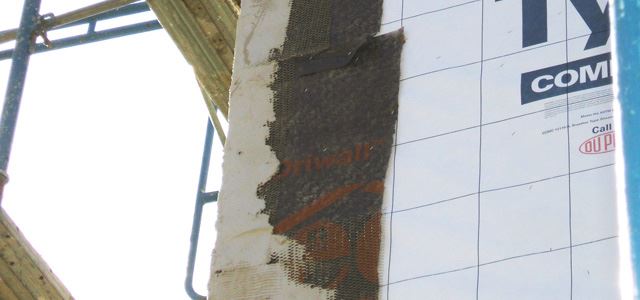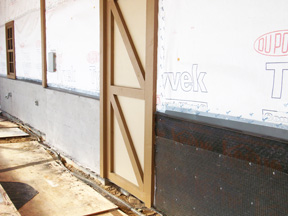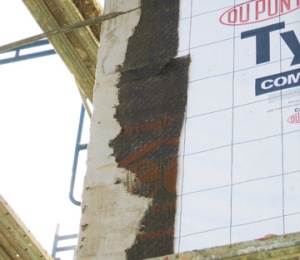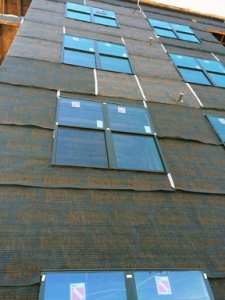
What applications is Driwall™ Rainscreen used in?
Driwall™ Rainscreen is used behind stucco, manufactured stone, thin natural stone or brick, siding, and masonry to provide an assured airspace for drainage and ventilation.

Why should Driwall™ Rainscreen be used instead of a dimpled or pleated house wrap product?
The house wrap products do not provide an adequate gap between the cladding and the sheathing to break the capillary action of water droplets so that positive drainage can occur. Furthermore, these products do not provide enough open space for air to flow through the walls. Driwall™ Rainscreen provides a minimum of ¼ inch of airspace to allow moisture to drain down and out of the wall. The ¼ inch of open space allows air to flow through the wall to provide the ventilation that is necessary to dry out the sheathing and the exterior veneer.

What is the process for installing Driwall™ Rainscreen?
Driwall™ Rainscreen is installed over the weather resistant barrier after all flashing details have been completed. The product is cut to fit around all windows, doors, and other penetrations just as a weather resistant barrier would be installed. Driwall™ Rainscreen can be attached using cap nails, screws, or staples. The siding or the lath, scratch coat, and exterior veneer are then installed per the manufacturer’s installation guidelines.
 How does the fabric on one side of the Driwall™ Rainscreen work?
How does the fabric on one side of the Driwall™ Rainscreen work?
The fabric is a breathable, nonwoven fabric that faces away from the sheathing. It prevents plaster or debris from entering the designed airspace. The three-inch selvage edge of fabric is folded over the adjacent sections of Driwall™ Rainscreen and can also be folded over the top and bottom openings to serve as a bug screen.
How is Driwall™ Rainscreen packaged?
Driwall™ Rainscreen 020-1, the ¼ inch drainage mat, comes in rolls that are 4’ by 65’ for a total of 260 square feet of material per roll. There are 18 rolls per pallet.